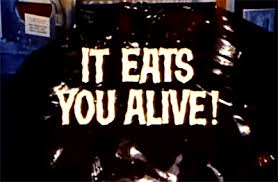A basic guide that can come in handy for aspiring writers and interested film buffs
Watching and studying films of all kinds hone you not just as a viewer, even as a writer as well. As the cliché says, practice makes perfect. As you continue to write, you discover what really works best for you.
This basic guide is meant for starting scriptwriters, filmmakers, and film students, as well as those who couldn’t prioritize attending scriptwriting workshops or enrolling in formal film studies.
Come up with a concept.
Everything starts with a concept. Make this concept simple. Like the script, which is also called a screenplay, the concept should be in present tense. From this point onwards, as you expand your concept towards the final screenplay, write in present tense and use third person throughout. It is best to keep the concept as a one-liner. Ideally, it should answer or support most of the following questions:
- What is the story all about?
- What is the theme? (a love story? boy meets girl? girl meets boy? treasure hunting? ghost story? conquering one’s fear?)
- What will be the film’s genre? (drama? comedy? horror? action? gangster? youth-oriented? suspense? fantasy? children’s? period film?)
- Whose point of view (POV) will be used for the film? (usually, it’s the POV of the protagonist, but not all the time)
Make your characters believable.
In general, unless the story calls for something else, it would be good to show some gray areas of your key characters’ personality. This makes them more human, allowing the viewers to relate to them more. They become more believable. Be careful of the use of pure white and black characters, may it be the protagonist/antagonist, supporting or minor roles, or even bit players (extras). Make a character breakdown from the back stories of your characters. With how you make your characters, the following questions should be clearly answerable:
- What kind of lives do your characters live?
- What is the goal of the main character? (to win the love of the girl or guy? to fight for the country? revenge? to unveil/solve a secret/mystery?)
- What is/are the motivation/s of the main character? (his/her love? his/her drive to save mankind? his/her revenge? looking forward to a successful career?)
- What are the strengths and weaknesses of your characters?
In a linear format of a screenplay where there is a beginning, middle, and end, the main character particularly gets to have a certain change in character come resolution time – most of the time, in mainstream and feel-good films, for the better. But sometimes, there are negative changes too.
Expand your concept to a storyline.
A storyline is generally 1 to 2 pages and it tells the reader what happens in the main story from start to end. Base your characters from the character breakdown you made so you won’t get lost. Also, your concept, goals, and motivations should be clear so you keep yourself on track. The story becomes tight, justifiable, culturally correct, among other things, depending on your very intentions for the film. Do researches to help you craft the best narrative for the film.
For beginners, always make things simple. Upon mastery, that’s the time to be a more intricate and complicated. Explore, experiment, and enjoy.
Don’t deal too much on having lots of sub-plots in every sequence (like too many flamboyant actions and situations. Be more keen on characterization and the needed actions to make the story work. This puts heart to the story and makes the narrative more effective.
Write your sequence guide.
This is the storyline adjusted to conform with the screenplay format already (cut into sequences). It provides the basic screen directions but it has no speaking lines yet. Just to give a basic idea about a “sequence,” it is a group of scenes working together, generally with one major business in a single location and a particular time frame (e. g. the sequence of the team playing basketball in an evening championship game where all the fans are cheering for their teams).
Write your sequence treatment.
This is an expanded sequence guide but still without the speaking lines yet. Here, you describe the scene (scene direction) in a more detailed manner.
After final revisions, the treatment should be ready for the writing of the screenplay/script.
Write your screenplay.
This is the sequence treatment with the speaking lines included and all the production requirements carefully crafted into it already. The screenplay has a basic format. You can check the Internet and books for further guidance. Most films and dramatic productions follow the “Sequence number. Interior/Exterior. Location. Day/Night format.” Some TV scripts, especially lifestyle and talk shows, reality shows, and even TV commercial and AVP scripts, follow the “audio-video (AV) format.” The different formats can allow slight variations depending on the need of the production. What is important is that the chosen format works for the project’s requirements.






